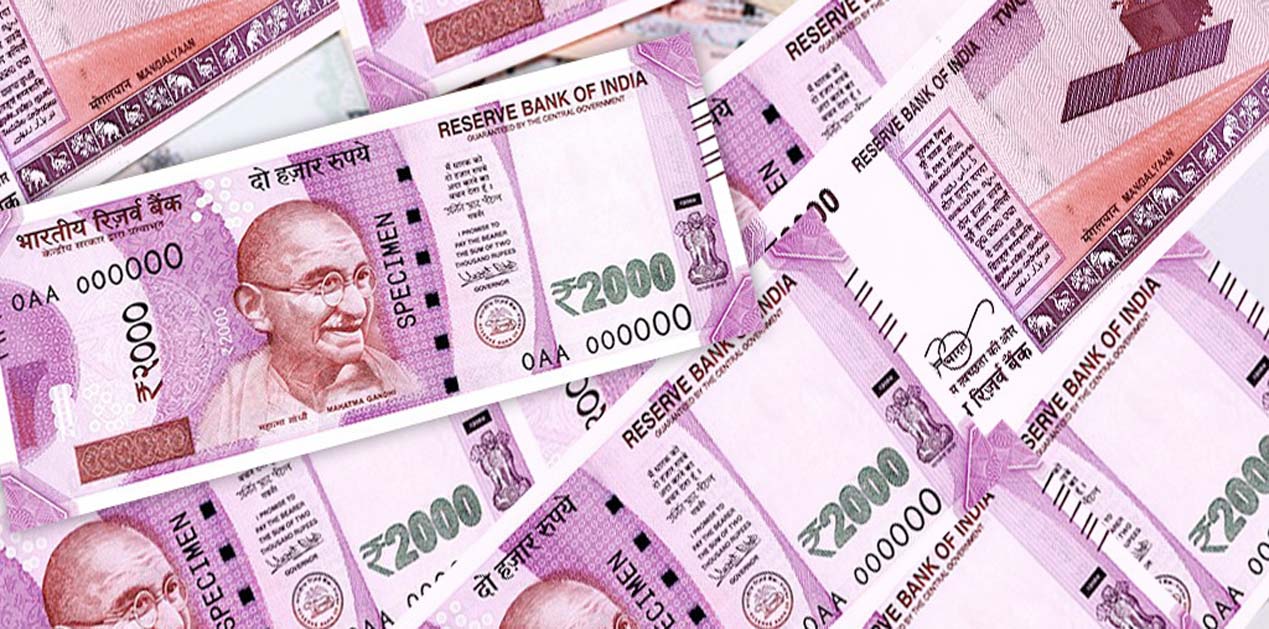Of all the multidimensional corrective elements that were missed — actually, side-stepped if not suppressed — in the politically uproarious anti-Modi national discourse about the demonetization exercise, the most important element was the huge crisis which the note ban hedged and averted.
A huge crisis averted
To know what India escaped, one has to look at what the US got into. The fake asset prices that drove high growth in the US from 2001 to 2008 deceived the US and the world into believing it to be real and finally landed the whole world in the unprecedented financial and monetary crisis of 2008. The emergency measures to handle the crisis — nil to negative interest rates and printing money which sustain the show of growth even now but can trigger another crisis — are still on. But what is the relevance of what happened in the US prior to 2008 to the demonetization (in short, de-mon) discourse in India in 2016? Read on.
Asset prices in India rose by ten times in those six years as compared to the earlier five years — stocks by 311 per cent against 32 per cent in the earlier five years; gold by 320 per cent against 38 per cent; and land by 200-2,000 per cent, in different places, against 21 per cent. In India, the nation celebrated this mirror wealth effect growth of the US as real from 2004. But what really was the cause of the asset price rise? The normal rise in money supply from 15.3 per cent in the earlier five years to 18 per cent in the high-growth years cannot explain the towering asset prices. How then did India experience an unprecedented asset price rise? The answer lies in one word: cash — in particular, the unprecedented rise in high-value notes, a third of which, according to RBI, was circulating outside banks. The printed cash to GDP ratio too rose sharply during the asset inflation period. In just 18 months between April 2015 and September 2016, the stock of Rs 500/1000 notes rose by Rs 4.8 lakh crore! The bank indent — read the appetite — for Rs 1,000 notes, kept rising from 1,500 million pieces in 2014-15 to 1,800 million in 2015-16 and to 2,200 million in 2016-17. What reckless bank lending did to the US till 2008, reckless printing of high-value notes did to India. At the rate of printing notes recorded in 2015-16, in the next 72 months, by 2022, high-denomination notes would have doubled to Rs 36 lakh crore and, at the accelerating rate, to as high as Rs 41 lakh crore. This could have dynamited the nation’s financial order. De-mon became inevitable to avert the huge unmonitored cash-led crisis in the offing, to force the economy flooded by cash into a less-cash economy and to drive the excess cash circulating outside into banks. This extremely critical aspect was completely ignored in the irrationally noisy de-mon debate.
De-mon: A multidimensional success
Contrary to the widespread view, de-mon has been a success in bringing into tax account the unmonitored roaming cash amounting to some Rs 3.35 lakh crore — a large part of which is under a tax probe. De-mon has raised the individual tax base by 20 per cent, advance tax collections for 2017-18 by 42 per cent and self-assessment tax (paid now for last year) by 34 per cent. Both in bringing substantial black money of the past into account and in ensuring better tax compliance, de-mon has been a success. An incredible achievement of de-mon is the reduction in the total cash stock and the cash stock with the public. In absolute terms, cash stock has fallen from Rs 17.1 lakh crore to Rs 15.1 lakh crore — a reduction of Rs 2 lakh crore. Without de-mon, it would have topped Rs 22 lakh crore, that is, increased by Rs 4.9 lakh crore. Likewise, cash with the public fell by Rs 2.1 lakh crore. Had not de-mon intervened, cash with the public would have risen by Rs 6.6 lakh crore. Because of de-mon, as the cash with the public came down dramatically, the people’s deposits in the banks went up equally dramatically — from Rs 97 lakh crore to Rs 114.2 lakh crore.
The reduction of cash with the public and the rise in deposits with the banks will produce a dramatically opposite macro-economic impact. Cash with the public fuels and funds the black economy. Deposits in banks will fund the formal and organised sector. Moreover, by the fractional reserve model, money moving in and out of the banks multiplies as advances, by some six times. The flow of de-mon cash into banks — including black money — has already led to a cut in interest rates and a huge rise in lendable money, relieving banks that were stressed by illiquidity. With street cash in the banks, household financial savings rose steeply from an average of 10.5 per cent of the Gross National Disposable Income [GNDI] in the five years to 2016 to 11.8 per cent in 2017. Withdrawal of cash from fuelling asset prices will certainly hit GDP growth, but this near-term hit is necessary to shift the gear of the economy from jobless growth through asset price rise to growth with jobs. The impact of drawing money from the public and quarantining it in banks has crashed land prices in different parts of the country. The impact of this is clearly visible in the realty and housing sector, where asset price rise in land had stagnated the housing sector since at least 2012.
Crash spurious growth, trigger the real: The housing example
The first impact of de-mon was obviously on wealth effect-led growth itself. It is self-evident that when a huge volume of cash is withdrawn from the economy, growth will suffer. But what was implicit in de-mon itself became the charge against it. But this bitter pill was inevitable to course-correct the economy. See how it worked on the property market, the quality of growth in which is regarded as the index of real growth. A study by Liases Foras, an independent research company, showed that the gap between the index of housing affordability and prices which was equal at 100 in January 2005 began rising and reached a peak with the price index at 529 in March 2014 and affordability at 173 — showing a gap of almost three times. With unsustainable land prices stagnating the real estate economy, prices too stagnated later. Liases Foras said the gap between affordability and price was entirely due to speculation through the cash component which dominated the land market and also the secondary housing market that accounted for almost two-thirds of housing buys.
The study said, “the perfectly timed” de-mon would cut land prices by 30 per cent due to a reduced cash component, adding that making housing hit by speculative land prices affordable appears to have been achieved as the outcome showed a rise in demand for affordable housing. Liases Foras also pointed out that residential sales across the top eight cities of India had increased, taking the total growth to around 28 per cent post de-mon. Most of the rise is in the affordable range as the average loan disbursement of Rs 26 lakh per unit by HDFC showed. The World Property Guide (May 18, 2017) also saw a rise in affordable housing leading the housing recovery. The Confederation of Real Estate Developers’ Associations of India (CREDAI) said that in the long run de-mon would help organised developers procure land at more appropriate rates as such land will not be competing with buyers who were channeling their black money into land buying and holding. CREDAI said: “This will help in construction of more affordable houses and achieve the Housing For All objective by 2022.” The housing market has recovered despite disruption by the new real estate law and GST. This huge correction in the realty sector too has gone virtually unnoticed as the debate got reduced to merely the number of notes returned.
But, two caveats
But wrong follow up and irresponsible NPA norms could derail what de-mon has achieved. De-mon is a huge investment at current cost for future returns. Its hard-won advantages should not be frittered away. There was of course a costly miss in the conception of de-mon. The voluntary income disclosure scheme announced ahead of the de-mon project should have been clubbed with it so that those who had black cash would have disclosed it rather than risk depositing it in benami names, making tax collections time-consuming. This also would have avoided equating the success of the de-mon project to the quantum of de-legalised notes not deposited back and made collection of tax on black money as the real test. On the post-de-mon follow-up, two caveats. One, de-mon has sucked the entire cash stock into banks and it has also reduced the ratio of cash to GDP back from 13 per cent to less than 10 per cent of GDP. But this hit the informal sector which is funded almost entirely by black money. Closing the tap of black money that was funding the informal sector, which contributes to 50 per cent of the GDP and 90 per cent of non-farming jobs, has caused a dip in the growth rate and jobs. Had the Mudra finance scheme been implemented as originally conceived ahead of de-mon, this could have been avoided. But it did not happen then. And it has not happened even now. There is no follow-up of de-mon to relieve micro and small businesses of their distress.
This is telling on growth and jobs. Two, PSU banks, which control 70 per cent of bank de-posits, are paralysed because of the artificial NPA rules unsuitable to India, borrowed from Basel norms. The RBI is clearly responsible for the virtual stoppage of lending by PSU banks which has hit even medium and large industries. India needs a lending model based on future viability based on Indian conditions and not on the Basel rules of liquidity which is appropriate for countries which have capital account convertibility and which have opened the banking sector to foreign ownership. Neither is the case in India, and in addition state-owned banks control 70 per cent of bank assets. And yet RBI is virtually destroying Indian business by applying the Basel norms. And the government is just a mute spectator to this sad spectacle. Additionally, the forcible reference of the NPA cases of units viable for restructuring under the bankruptcy law is a disastrous way of dealing with NPAs.
The government and RBI have to forensically distinguish NPAs caused by financial dishonesty from policy- and market-forced NPAs and punish the former and restructure the latter if they are viable.
To end, unless Mudra is implemented forthwith as originally proposed, PSU banks begin lending again, and RBI frames restructured policies disregarding the Basel norms, the economy will slide into deep difficulties in the coming months and years. Are RBI and the Modi government listening?
(Concluded)
The author is a well-known commentator on political and economic affairs.
Published in The New Indian Express on 6 September 2017
Image Source: http://knowledge.wharton.upenn.edu/article/will-demonetization-affect-business-india-2017/











Sir this article is really great and comprehensive.
On mudra scheme I had one observation that limiting the scheme to SC and girls only, is not a unrealistic dream and making biggest hurdle for success of this scheme.
One more thing sir on black money which got back in bank it wil be under scrutiny of income tax dept which will take 21 months completing assesment from now so why this narrative not putted.
Post new comment